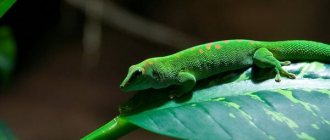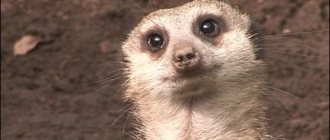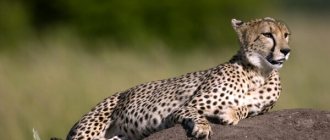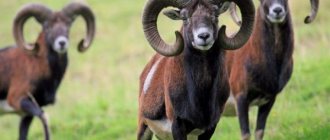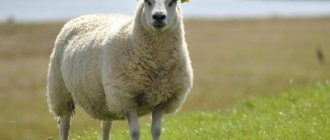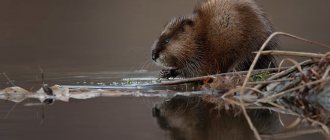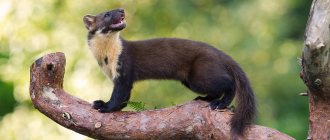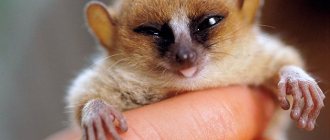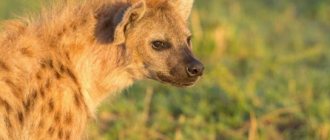- Wild animals
- >>
- Mammals
Those who adore guinea pigs and have kept or are keeping such a charming pet at home the capybara , because these animals are very similar in appearance, only the latter is tens of times larger and more impressive. It’s hard to believe that an animal of such significant size is a rodent and not just a simple one, but the largest one on the entire globe. The amazing and unusual capybara is the mistress of the water element, without which this animal simply cannot imagine its existence.
Origin of the species and description
Photo: Capybara
If we turn to ancient history, we can say that the capybara genus has roots going back centuries, even millennia. There is evidence that about three million years ago, a huge rodent lived on the South American continent, weighing up to a ton. This titan had smaller relatives, weighing hundreds of kilograms.
In those days, South America was isolated from North America, and the fauna of giant rodents felt very at ease. With the advent of the Isthmus of Panama (as a result of various natural disasters), more aggressive animals began to move from the North American continent to the southern one, oppressing the huge rodents, which gradually disappeared. Fortunately, one relative was still able to adapt and survive; it was and remains the capybara, which had a hard time competing with larger herbivores.
The very word “capybara” from the language of the Guarani Indian tribe can be translated as “master of herbs” or “eater of fine grass.” Local aborigines called it by other names:
- poncho;
- capigua;
- caprincio;
- chiguire.
If we talk about the modern, scientific, official name of this animal, it sounds like “water pig”. So, the capybara (capybara) is a herbivorous mammal leading a semi-aquatic lifestyle, a representative of the capybara family. Scientists classified the capybara as a porcupine rodent. As a result of various biological studies, it turned out that of all the animals living today, the capybara has the closest family ties with the mountain pig (moko). However, the latter is completely indifferent to water.
Role in the ecosystem
In many parts of South America, capybaras are the only large species on the grasslands and can have a detrimental effect on the vegetation of the area. They also have mutually beneficial relationships with several species of birds, which select parasitic insects from capybara hair or follow grazing capybaras and eat insects that emerge from the grass. They are also important prey for other animals.
Appearance and features
Photo: Capybara animal
The calm and peaceful appearance of capybaras creates a feeling of their eternal thoughtfulness. Such an interesting expression on the capybara’s face makes you smile. The head of these rodents is quite large, the muzzle is blunt-nosed, even slightly squared. The ears are small, rounded, the eyes are also small, the nostrils are widely spaced and resemble a snout.
One of the features of this rodent is its large size and heaviness. The weight of males varies from 54 to 63 kg, and females are even larger - from 62 to 74 kg. There have also been heavier specimens (from 90kg), but this is rare. Capybaras grow from half a meter to 62 cm in height, and more than a meter in length.
Video: Capybara
The capybara has 20 teeth, the most impressive and terrifying are the incisors, which have an orange tint. They appear in the mouth like huge daggers. Other teeth (cheek teeth) continue to grow throughout life and do not have roots. Multiple tubercles on the animal's tongue make it thicker.
The coat of the water pig is rough and bristly, the hairs grow from 3 to 12 cm in length. The capybara has no undercoat at all, as a result of which the sun's rays can easily burn its skin, so it is often smeared with mud, like sunscreen.
The color of the capybara can be:
- reddish-chestnut;
- brown;
- dark chocolate.
The abdomen is always a lighter shade, with a slight yellowish tint. Some individuals have dark (almost black) spots on their faces. The color of the young is noticeably lighter.
The appearance of the capybara is associated not only with a guinea pig, it also looks like a pot-bellied barrel on four legs. It has four elongated toes with webbed partitions on its front paws, and three on its hind paws. The capybara's claws are thick and blunt, similar to hooves. The hind limbs are slightly longer, so sometimes the animal seems to sit down. On the powerful croup of the capybara, the tail is not visible at all. He is, of course, present, but somewhere deep down.
Cute pet
Before purchasing a capybara to live at home, you need to weigh your options and decide whether you can provide your pet with what it needs.
Namely:
- temperature conditions;
- a reservoir of considerable size;
- regular walks in nature.
Buying an animal
The sale of rodents is not prohibited.
Animals are most often brought to order from South America, but you can try to buy a capybara here:
- in a pet store;
- in the online store;
- by advertisement (from a private individual or breeders).
Buying a young animal will cost 100-260 thousand rubles. First of all, this is the cost of transportation and the procedure for processing all necessary documents.
Care
Keeping a capybara at home is not easy. The animal quickly gets used to the person and asks for his attention and care.
The owner should remember some features of caring for a water pig:
- The capybara, like any other pet, needs health monitoring, and therefore needs annual vaccinations. If you do not plan to breed rodents, then it is better to castrate the male at a young age, so that later, when he reaches puberty, he does not perceive the owner as an object of courtship.
- The tropical animal feels good in its native climate, that is, in warmth with high humidity. Living in the middle zone or in the north, it is necessary to create such conditions artificially.
- The capybara spends most of its time in water, where it needs to actively move, which means the reservoir must be of considerable size.
- The animal's walking area must be carefully fenced so that the freedom-loving pig does not leave the designated area, and is also protected from dogs. In the city, a calm animal walks well on a leash.
- Capybaras are unpretentious in food; their diet consists only of plant foods. They eat everything that grows, you can also use granulated food for rodents or dogs (the largest granule size), vitamin supplements are required. The animal must be given the opportunity to sharpen its teeth; tree branches and sticks are suitable for this.
- A sociable capybara asks for the attention of its owner. If there are other animals in the house, she will easily make friends with them, but in the absence of them she will be bored. It can show aggression (even towards a person) in case of self-defense. You will have to get used to the capybara's voice: it almost constantly makes many sounds, thus communicating with its fellow tribesmen or its owner. The range is quite wide: squealing, whistling, clicking, grinding, barking. They remain this way throughout their life in captivity (10-12 years).
- No care is required for the appearance of the animal. The capybara puts its body and fur in order on its own.
The most famous tame capybara
Capybara named JoJo has become the most famous rodent on the planet thanks to his good nature, photogenicity and global social network. Her page (its owner) had more than 120 thousand subscribers, and films with the YouTube star pig were watched by about 10 million viewers.
The capybara lived in America. Her owner, Kennedy, purchased the little piglet from a breeder for $800. It took me a long time to come up with a nickname; the animal ignored any appeal to itself. Finally, it responded to “Jojo.”
The last photos show that the not very thick hair of the water pig began to thin out more and more, and bald spots appeared. The owner commented on this fact: “He’s getting old.” But obviously JoJo was getting sick. In August 2022, he died, having lived only 5 years, which is short even for natural conditions.
Where does the capybara live?
Photo: Capybara animal
The capybara has a permanent residence in both Central and South America. She prefers climates with high humidity. Lives in countries such as Argentina, Brazil, Colombia, Venezuela. It can be found in Peru, Bolivia, Paraguay, Panama, Uruguay, Guyana. In general, this good-natured animal spread throughout the South American continent.
One of the most important living conditions for this large rodent is the proximity of a body of water. The water pig loves river and swampy banks, likes to settle near lakes and ponds where hyacinth and leaves grow.
It grazes in meadows, eating Guinea grass, and is found in agricultural lands. The capybara lives in the Chaco forests and savannas, which are flooded during floods. It is also possible to see the water pig in mountainous areas (about 1300 m), near mangrove swamps.
The capybara usually does not go further than a kilometer from the reservoir, because this is not only its native and favorite element, but also a refuge from large land predators. The capybara does not set up a den, burrow, or den; it lives and rests right on the ground.
Price
These large rodents are purchased by cottage owners who want to have an exotic animal, or by owners of private zoos. It is not uncommon on the Internet to advertise that a capybara ; the price for it can reach 100 thousand or more rubles.
Before purchasing an animal, you need to make sure that there is a veterinarian within reach who has experience working with exotic rodents. Capybaras can not only bring joy, but also share some diseases or parasites with humans.
In addition to the costs of veterinary care, you will have to calculate the costs of building an enclosure and a swimming pool. During construction, it is necessary to take into account that the domestic capybara is a heat-loving animal. The least financial problems will arise when organizing the capybara's diet - its diet is simple and affordable.
What does a capybara eat?
Photo: Capybara capybara
It’s not for nothing that the Indians called water pigs the Lords of Grass, because... They feed mainly on it. They eat vegetation living in water and on land. When the rainy season ends, capybaras feast on sedge. They eat capybaras and dried grass and hay. They do not disdain both tree bark and various fruits; they also eat tubers of various plants.
Capybaras love all kinds of melons, in search of which they come to cultivated fields. They can be seen in both reed and grain crop fields, but these peaceful animals do not cause much damage. Still, they prefer algae and grass. In dry times, capybaras compete with cattle for pasture.
An interesting fact is that water pigs are coprophages, i.e. they eat their own feces. Nature arranged it this way for a reason; it helps capybaras with digestion.
The fact is that these animals cannot digest the huge amount of fiber in the grass. Because of this, the capybara has a special chamber located in the cecum, in which food is fermented.
All fermentation products are not completely digested by animals, but leave the body along with feces, which the capybaras then eat, replenishing the body’s need for all the necessary enzymes. Those who kept a guinea pig at home could repeatedly observe this process; in capybaras it usually occurs in the morning.
Nutrition
Aquatic vegetation is the main food of capybaras. They consume succulent parts of plants: tubers, leaves, bulbs. Capybaras can dive for particularly nutritious greens. They can spend up to 5 minutes under water.
Capybaras are very selective in their diet. If any type of succulent food is present, others are completely ignored. Despite choosing the juiciest plants as food, it is difficult to digest them. To increase the number of intestinal bacteria that decompose fiber, capybaras eat their own excrement.
This method of replenishing intestinal flora, which helps digest green mass, is called autocoprophagy. In addition, capybaras often behave like ruminants. They regurgitate food they have already swallowed and chew it again. These two techniques allow you to extract the maximum amount of protein and vitamins from greens.
Like any herbivores, capybaras devastate plantings of sugar cane, corn, and other grains, and can damage melon plantings. Farmers don’t really like this, and capybaras, as pests, are often shot. Besides humans, capybaras can be attacked by almost any predator.
Features of character and lifestyle
Photo: Capybara rodent
Capybaras simply cannot imagine their life without water. In the water they eat, drink, relax, take mud baths, cool off, and escape from danger. The way of life of these animals is collective. They live in entire families, numbering from 10 to 20 members. Their way of life is very similar to a harem, in which there is a main male sultan, several female concubines with cubs. There are also representatives of the stronger sex in the harem, but they do not contradict their leader, completely obeying him. If the leader feels a competitor in someone, he will drive him out of the family, so some males have to live alone.
Both females and males have special anal glands that emit a special aroma; each one has an individual and unique scent. For males, he talks about their position in the family. Males also have scent glands on their heads, which they use to mark their territories. Sometimes the domain of one harem can extend over 200 hectares, but usually they occupy from 1 to 10 hectares. During the rainy season, capybaras disperse over large areas, and during dry times they cluster in the coastal zone of water bodies. Sometimes you can see hundreds of capybaras around a lake or river, some of which have traveled hundreds of kilometers looking for water.
Although capybaras are peaceful and very calm animals, fights and skirmishes between males do occur. This is due to the status and position in the group, for which males fight. It is interesting that fights within one family never lead to the death of one of the males. If fights occur between males from different groups, then such a disastrous outcome often happens. Capybaras become most active in the late afternoon and at dusk. In the morning hours they prefer to relax by the water. In intense heat, capybaras climb into shallow water and love to tinker in the mud. These animals do not make homes; they sleep on the ground. Capybaras' sleep is very sensitive and short-lived; they often wake up at night to eat.
Capybaras have a lot of talents: they swim and dive excellently, despite their curvaceous forms, and don’t forget about their membranes between their toes. In addition, water pigs can gallop, escaping from ill-wishers with large leaps. And the range of sounds they make is simply amazing.
Capybaras cackle funny, whistle, bark, make clicks, squeal, and grind their teeth. Each cry has its own symbol, which is very interesting and unusual. If animals sense danger, they notify others by barking. Capybaras squeal when they are very alarmed or something hurts. When talking to each other, they click funny, and when they fight, the males can hear the gnashing of their teeth.
If we talk about the character, then the capybaras are very phlegmatic, one might even say that they are slightly lazy. These animals are very friendly, they make contact with people without any problems, especially if they are treated to something. It is also not difficult to tame a capybara; it can become a devoted and affectionate friend, no worse than a dog. Even in circuses, capybaras perform successfully, because... are highly trainable. The disposition of these huge rodents is good-natured and meek, completely good-natured. In nature, capybaras live from 6 to 10 years, and in captivity - from 10 to 12.
Habitat
Representatives of the species can be found in Central and South America. The animals occupy territories from Panama to Argentina. Large concentrations of giant rodents are observed in Bolivia, Guyana, Peru, Brazil, Uruguay, Paraguay and French Guiana.
Capybaras inhabit swampy areas, lowlands, flooded meadows, river banks and lakes.
The main condition is the presence of lush vegetation and reservoirs. Sometimes animals can be found in agricultural or rice fields, as well as in water meadows.
Social structure and reproduction
Photo: Capybara animal
As already mentioned, capybaras are herd, collective animals; they do not like loneliness and live in large families with a clear hierarchy. There is no specific mating season for capybaras; reproduction occurs year-round, but is especially active with the arrival of the rainy season. Gentlemen lure ladies by placing their fragrant marks on nearby plants. Males usually fertilize females directly in the water. Capybaras are polygamous animals; one female can have several sexual partners in one period.
Gestation of the cubs lasts about 150 days. Usually childbirth occurs once a year, sometimes this process can occur twice a year.
Little piglets are born right on the ground; the mother does not make any nest. Usually there are from 2 to 8 pieces. Cubs look the same as adults: they are covered with hair (a little lighter than that of mature individuals), sighted and toothy, only much smaller in size, they weigh about one and a half kilograms each.
Mother capybaras treat their offspring with milk for about three to four months, although they can chew grass almost immediately after birth. All females living in the flock look after and care for the offspring. Capybaras become mature and capable of reproduction by 18 months, when their weight reaches 30 or 40 kg.
Farm breeding
The largest rodent in some South American countries, particularly Venezuela, lives not only in the wild. There are capybara breeding farms around the world. They differ, first of all, in scale, that is, in the number of rodents raised. Small ones number 500-2000 heads, large ones – up to 30 thousand.
Why did farms choose to keep pigs instead of cows? The ongoing weather disasters on the planet have also affected the countries of South America: long periods of drought or floods have become more frequent here, which has a negative impact on the food supply for cattle. And capybaras are unpretentious and more economical.
They better assimilate the food they eat, process grass into protein better, and can even get enough of tree bark during a difficult period. The factor of animal reproduction is very important: cows give birth to one calf per year, which must be taken care of until it grows up. Rodents in their homeland breed 2 or even 3 times a year; all the females of the herd take care of the piglets; they do not require additional care from their owners.
Venezuelan farmers achieve profitability by following simple rules:
- Do not disturb (or create) the natural habitat for pigs.
- Animals under 18 kg are not slaughtered.
- Do not touch pregnant or farrowed females nursing cubs.
For example, the ElFrio farm, where cows and capybaras coexist peacefully, covers an area of 81 hectares. Pigs here are bred for meat, which is supplied to city markets and costs the same as beef. The demand for products is great and constant.
Venezuelan experts are confident that capybara breeding for meat production may soon surpass cattle breeding, that is, the industry is very promising. In addition to meat products, capybaras provide skin and fat, which is used in pharmaceuticals.
Natural enemies of capybaras
Photo: Capybara
Despite their large dimensions, capybaras have plenty of enemies. Among those that pose a threat to the capybara are:
- jaguar;
- ocelot;
- crocodiles;
- alligators;
- cayman;
- anaconda;
- wild dog.
Young animals are most often attacked by wild dogs and feathered predators from the vulture family. From ill-wishers attacking on land, capybaras run away with huge leaps into the surface of the water, where they hide under water, leaving only one nostril on top for breathing. So they sit tightly to each other (the young are usually in the center, and the adults are at the edges) until the danger has passed. In addition, animals have a well-developed communication system, as mentioned earlier. If a capybara senses an impending threat, it will definitely warn all members of its family by making a barking sound.
People also exterminate capybaras by eating their meat, which tastes similar to pork. Haberdashery products are made from capybara skin, and all kinds of jewelry are made from large incisors. There is even such a funny and absurd fact known: three centuries ago, Catholic clergy recognized this rodent as a fish and allowed them to eat capybara meat during Lent. Today in Latin America there are entire capybara breeding farms. Their meat and subcutaneous fat are used in pharmaceuticals for the production of medicines. The value of capybara fat is comparable to that of a badger.
Economic value for people: positive
Capybaras are prized for their quality meat and skin. The meat is especially popular during Lent, the 40-day period before Easter, because it is approved by the Catholic Church as an alternative to beef or pork. (Supposedly the semi-aquatic lifestyle of capybaras convinced early priests that they were fish-like.) To reduce illegal hunting, capybaras were encouraged to be farmed, and the animals were domesticated quite easily, at least in small numbers.
